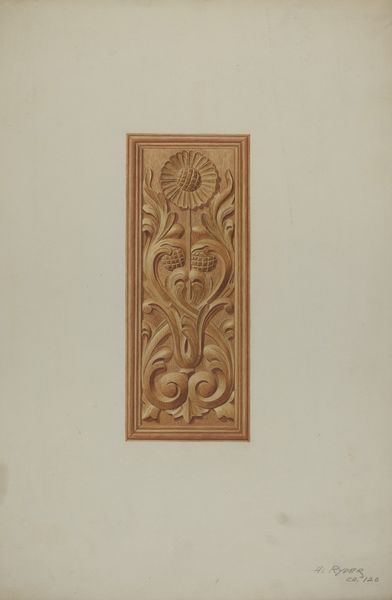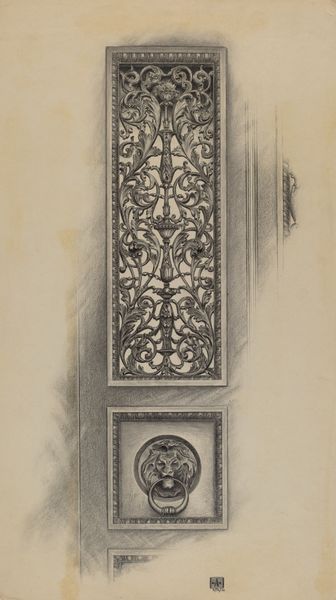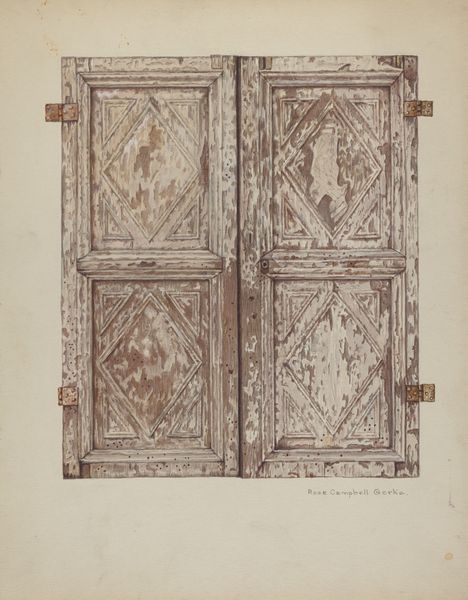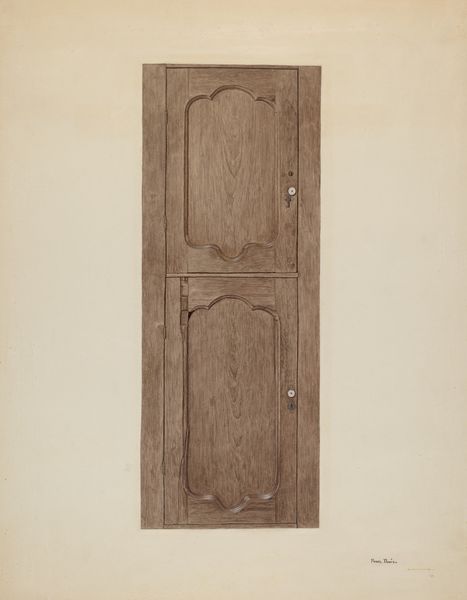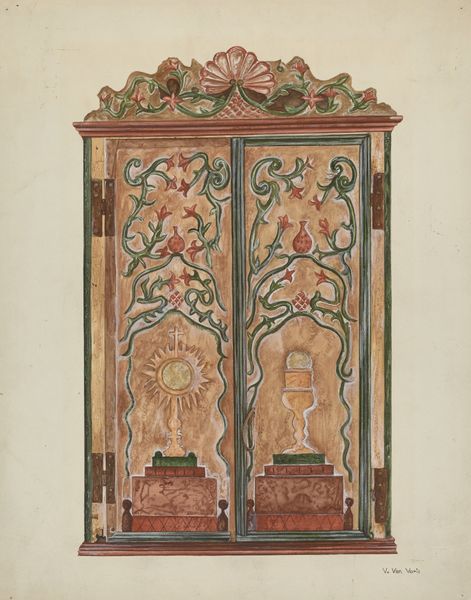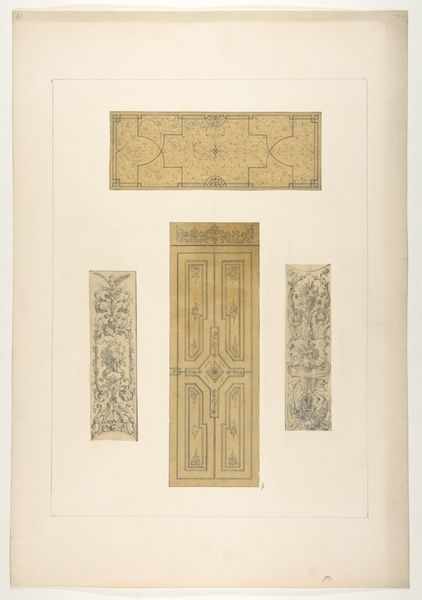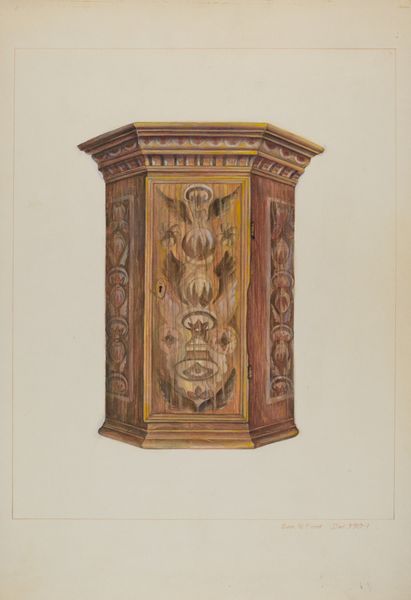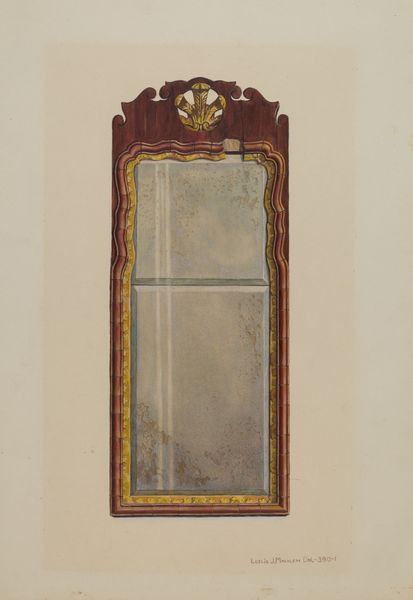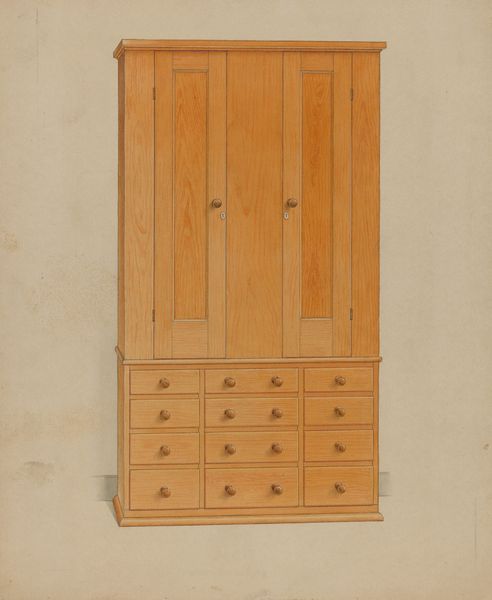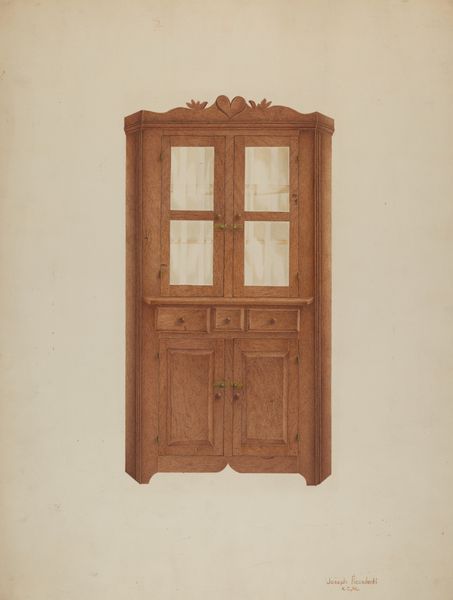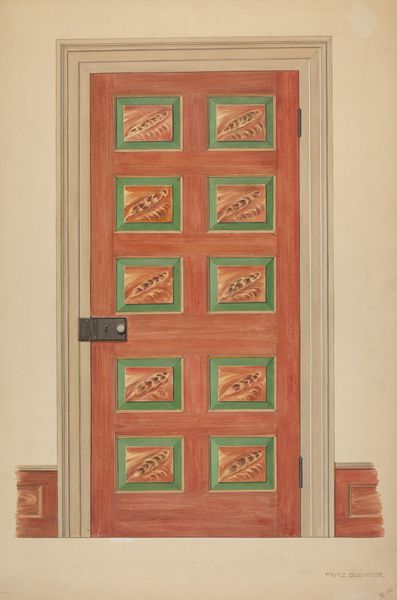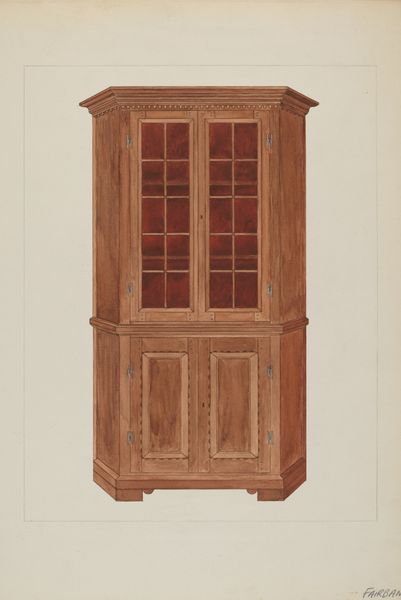
drawing, carving, pencil, wood
#
drawing
#
carving
#
charcoal drawing
#
pencil
#
wood
Dimensions: overall: 35 x 24.5 cm (13 3/4 x 9 5/8 in.) Original IAD Object: 13" high; 10" wide
Copyright: National Gallery of Art: CC0 1.0
Curator: Looking at this, I’m immediately struck by a feeling of groundedness and warmth. It has the aura of old-world craftsmanship. Editor: Absolutely. The "Wooden Panel," crafted around 1936 by Wellington Blewett, blends drawing, carving, pencil, and charcoal on wood, setting it at a fascinating intersection between medium and message. The integration is both compelling and thought-provoking. Curator: The wheat motif is prominent here, which is very resonant for me. The panel depicts wheat with an almost reverent quality. I see symbols of sustenance, abundance, perhaps even national identity—an emblem that links people to land and labor. Editor: Exactly. Placing this piece in the context of the 1930s is vital. Blewett created this during the Depression Era when agricultural work was greatly impactful on a national identity struggling for economic and cultural security. The romanticization of the pastoral provided comfort, but it also masked the very real struggles of farm workers at that time. Curator: I appreciate the nuance of that viewpoint. It gives a new complexity to an already layered symbolism. The flower at the bottom of the design looks different than the wheat above it; is it an afterthought, maybe? Or is it included to broaden its meaning? Editor: It adds to that complexity, actually. I see it as challenging a monolithic reading of rural imagery, questioning who benefits from the harvest—the field laborers, the wealthy landowners, or perhaps the state apparatus seeking to project an image of strength. Curator: That interpretation sheds new light on how symbols function to control power relations! Editor: Thinking about Blewett as the artist, he adds more to this story of national and rural symbolism at play during the period; race and gender become incredibly poignant for a critical discussion around national symbols in this work, for example. Curator: Reflecting on this artwork now, I’m even more fascinated by how the chosen medium affects how we see and receive a carved emblem of national significance, as rendered through humble wood and subtle drawing techniques. Editor: Indeed. It calls into question both visual culture and social structure in Depression-era communities as an important intersection in the historical narrative this work generates.
Comments
No comments
Be the first to comment and join the conversation on the ultimate creative platform.
